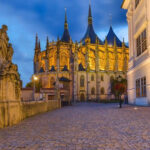How did Steven Spielberg manage to shoot such realistic World War II scenes in Saving Private Ryan? Steven Spielberg employed several techniques to create the realistic World War II scenes in “Saving Private Ryan,” which have been widely acclaimed for their authenticity and intensity. Here are some key elements of his approach:
Intensive Research and Consultation:
Spielberg and his team conducted extensive research and consulted with historians, veterans, and military experts to ensure historical accuracy. They aimed to depict the events and conditions of World War II as faithfully as possible.
Authentic Sets and Locations:
The production used real locations in addition to meticulously constructed sets. For example, the Omaha Beach landing scenes were filmed in Ireland, where the coastline closely resembled Normandy.
Realistic Combat Depictions:
Spielberg wanted to convey the chaos and brutality of combat. He used handheld cameras to create a shaky, documentary-style feel. The rapid, unsteady movements of the camera made the audience feel as if they were in the midst of battle.
Use of Practical Effects:
Practical effects, such as explosions and gunfire, were heavily utilized. This included using actual pyrotechnics and squibs to simulate bullet hits. The practical effects added a level of realism that is often hard to achieve with CGI alone.
Detailed Costume and Prop Design:
The costumes, weapons, and equipment used in the film were carefully designed and chosen to match the period accurately. This attention to detail extended to the smallest elements, like the types of insignia on uniforms and the specific models of weapons used by soldiers.
Training the Actors:
Spielberg put the cast through a rigorous boot camp, led by Marine veteran Dale Dye, to give them a taste of the physical and emotional challenges faced by soldiers. This training helped the actors deliver more authentic performances, as they had a better understanding of the soldiers’ experiences.
Sound Design and Score:
The film’s sound design played a crucial role in creating an immersive experience. The sounds of gunfire, explosions, and the chaotic battlefield were meticulously crafted. Additionally, John Williams’ score complemented the film’s emotional tone without overwhelming the realism of the scenes.
Limited Use of CGI:
While there was some CGI used in the film, Spielberg kept it to a minimum. He preferred practical effects and on-location shooting to create a more tangible and visceral experience for the audience.
These techniques, combined with Spielberg’s directorial vision and the dedication of his cast and crew, resulted in the highly realistic and impactful portrayal of World War II in “Saving Private Ryan.”


